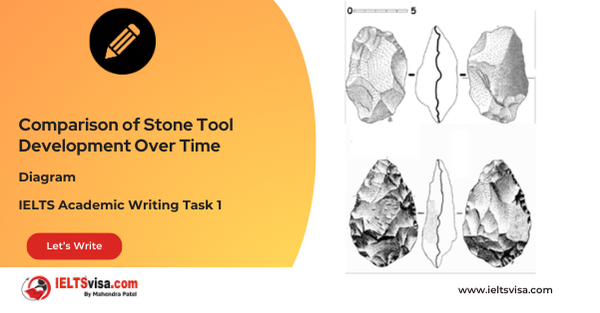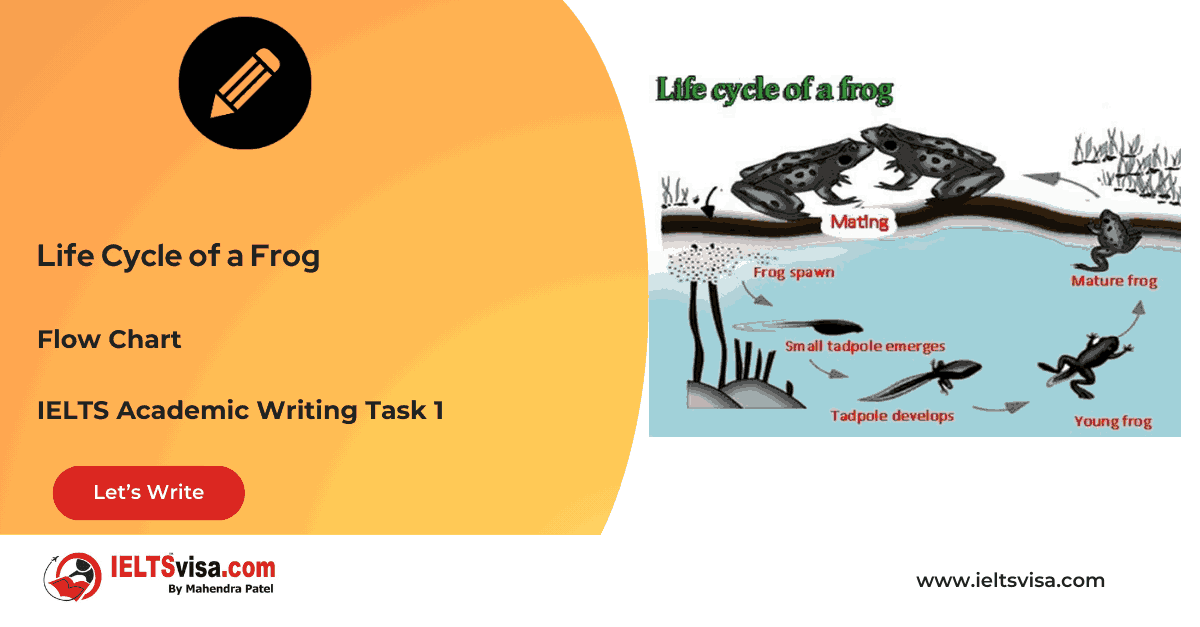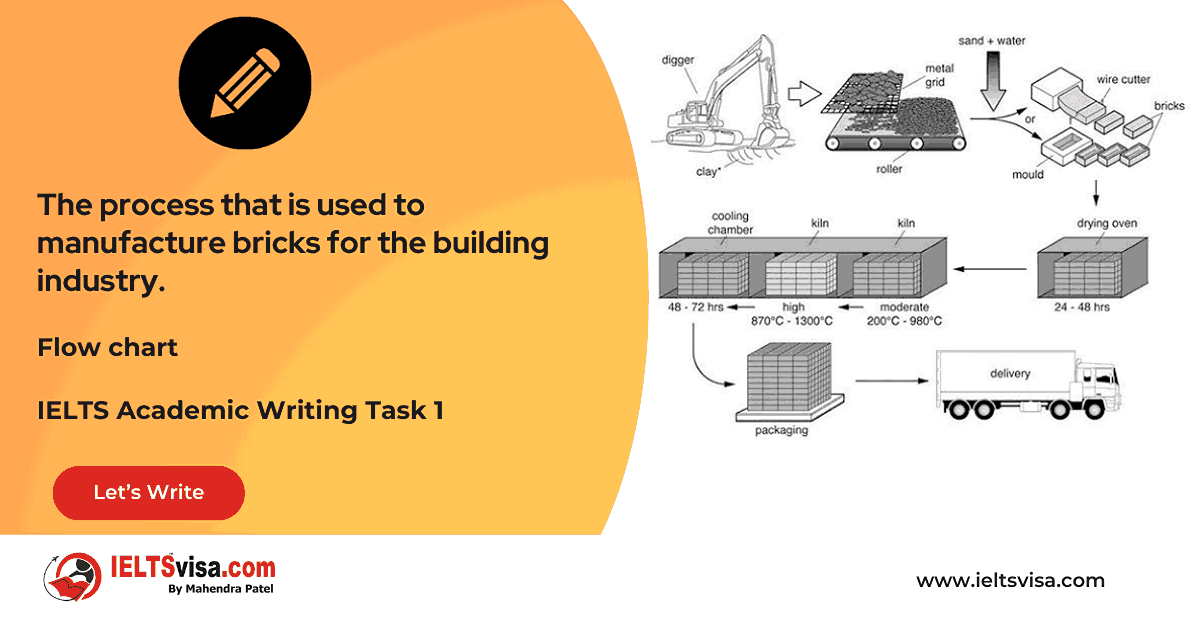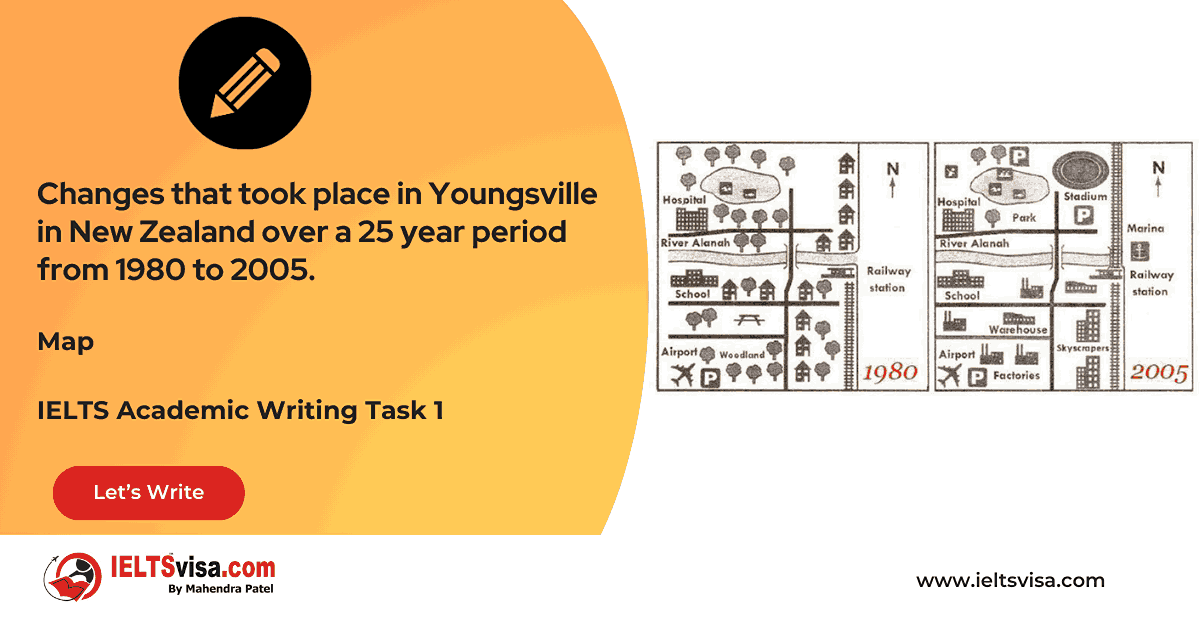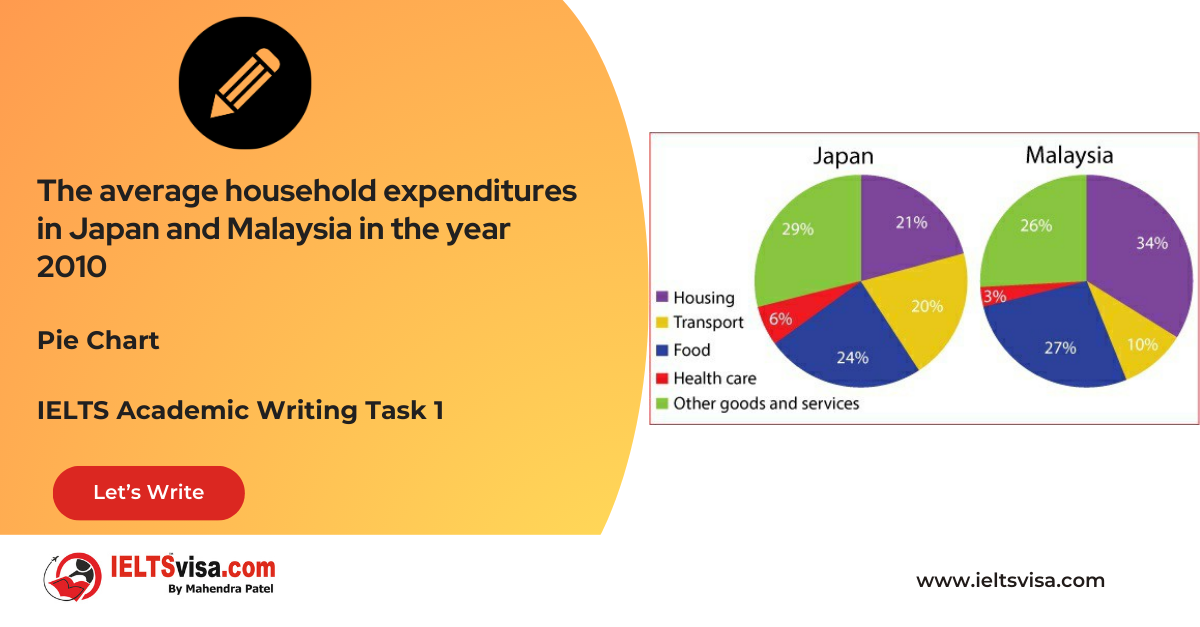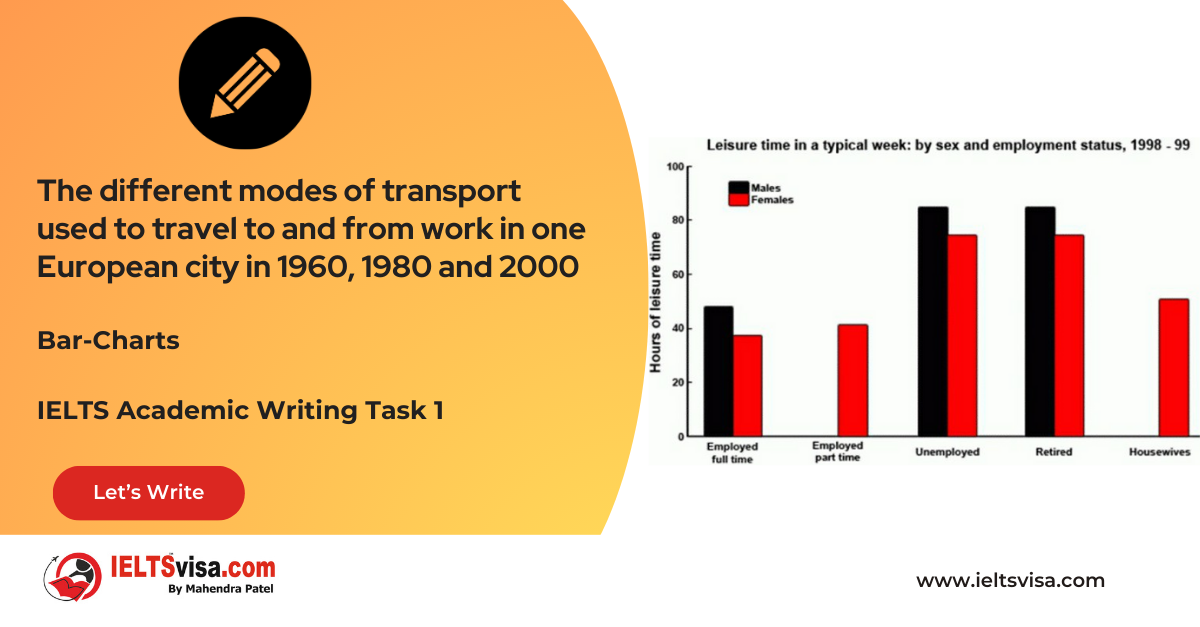Size of the Ozone Hole Over Antarctica and Production of Three Ozone-Damaging Gases (1980–2000)
IELTS Academic Writing Task 1 - Line Graph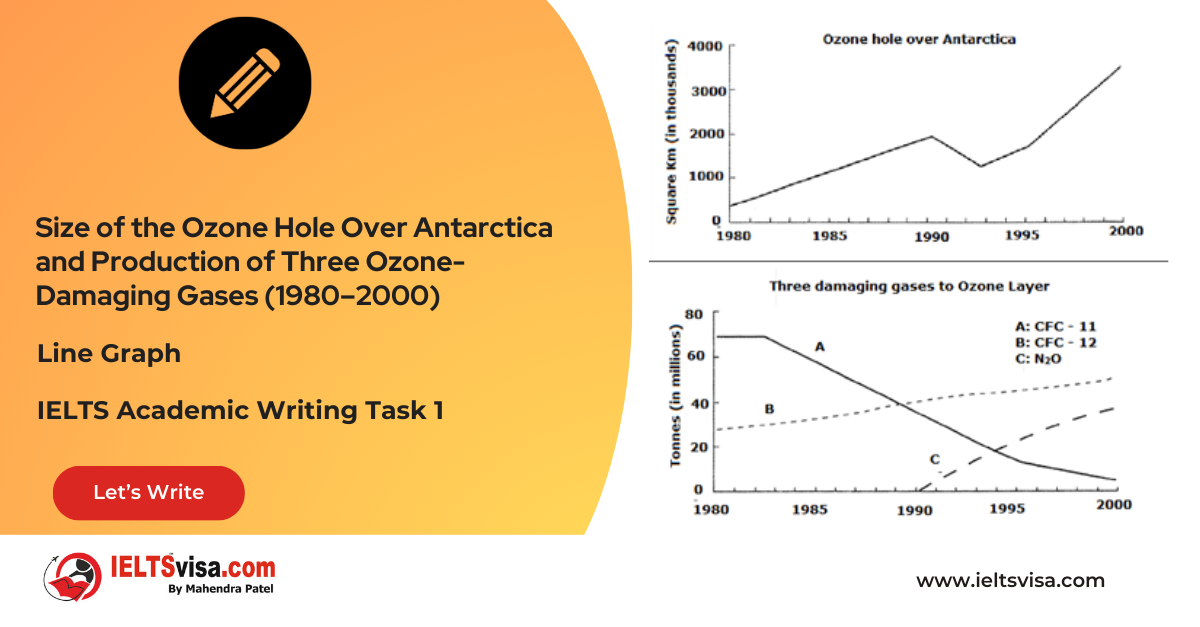
IELTS Writing Task 1 Question
The graphs below show the size of the ozone hole over Antarctica and the production of three ozone-damaging gases from 1980 to 2000.
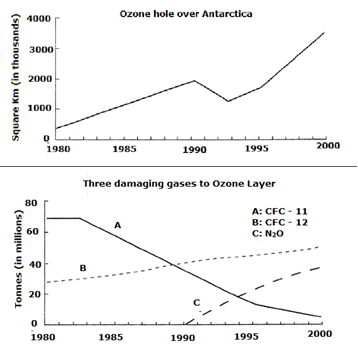
Common questions for the line graphs
1. Graph Type: Line Graphs
2. Title: Size of the Ozone Hole Over Antarctica and Production of Three Ozone-Damaging Gases (1980–2000)
3. What are the units of measurement?: Million square kilometers (ozone hole size), Million tonnes (gas production)
4. Who: The size of the ozone hole and the production of ozone-damaging gases (CFC–11, CFC–12, N2O)
5. When: 1980 to 2000
6. Where: Antarctica and global gas production
7. Topic: Trends in the size of the ozone hole and the production of damaging gases over time
Process Showing and Trends
Comparison 1 : Ozone Hole Size
• Details :
1. Started at 400,000 sq. km in 1980.
2. Expanded ninefold to 3.6 million sq. km by 2000.
3. Minor reduction observed in early 1990s.
Comparison 2 : Production of Gases
- Details:
1. CFC–11: Peaked at 70 million tonnes in 1980; gradually declined to <10 million tonnes by late 1990s.
2. CFC–12: Rose steadily from 25 to 50 million tonnes, surpassing CFC–11 in 1989.
Sample Answer
The two line graphs illustrate the expansion of the ozone hole over Antarctica and the production levels of three ozone-depleting gases from 1980 to 2000.
In 1980, the size of the ozone hole was relatively small, at 400,000 square kilometres. Over the next two decades, it expanded significantly, reaching 3.6 million square kilometres by 2000, marking a ninefold increase. The only slight reduction in its size occurred in the early 1990s when it shrank from 2 to 1.2 million square kilometres.
Regarding gas production, CFC–11 was initially the highest at 70 million tonnes in 1980 and maintained that level for three years before declining steadily to below 10 million tonnes by the late 1990s. In contrast,CFC–12 production saw a continuous increase from 25 to 50 million tonnes over the 20-year period, surpassing CFC–11 in 1989. The production of N2O began later, in 1990, and increased rapidly to approximately 40 million tonnes by 2000.
Overall, the data suggest that the expansion of the ozone hole was closely associated with the rise in CFC–12 and N2O production during the last two decades of the 20th century.
Top 28 Vocabularies
| Vocabulary | Meaning | Synonyms | Examples | Type |
|
Drastic |
Extreme or significant |
Severe, radical |
“The ozone hole grew drastically by 2000.” |
Adjective |
|
Steady |
Consistent over time |
Gradual, continuous |
“CFC–11 production showed a steady decline.” |
Adjective |
|
Surpass |
To go beyond the amount |
Exceed, overtake |
“CFC–12 production surpassed CFC–11 in 1989.” |
Verb |
|
Expand |
To increase in size |
Grow, enlarge |
“The ozone hole expanded ninefold over 20 years.” |
Verb |
|
Associated |
Linked or related to |
Connected, correlated |
“The rise in N2O was associated with the ozone hole expansion.” |
Adjective |
|
Illustrate |
To describe or explain something clearly with details |
Depict, demonstrate |
“The graphs illustrate the expansion of the ozone hole.” |
Verb |
|
Expansion |
The process of becoming larger or more extensive |
Growth, enlargement |
“The expansion of the ozone hole was rapid.” |
Noun |
|
Significantly |
In a way that is large or important enough to be noticed |
Considerably, notably |
“The ozone hole expanded significantly over time.” |
Adverb |
|
Fluctuation |
Irregular variation or change |
Variation, instability |
“There was some fluctuation in gas production levels.” |
Noun |
|
Decline |
A gradual decrease or reduction |
Decrease, downturn |
“CFC–11 production saw a steady decline after 1983.” |
Noun/Verb |
|
Emission |
The production and release of gas or radiation |
Discharge, release |
“Harmful emissions contributed to ozone depletion.” |
Noun |
|
Depletion |
A reduction in the quantity of something |
Exhaustion, reduction |
“Ozone depletion worsened due to rising gas emissions.” |
Noun |
|
Trend |
A general direction in which something is developing |
Pattern, tendency |
“A downward trend in CFC–11 production was observed.” |
Noun |
|
Surge |
A sudden large increase |
Spike, rise |
“N2O production surged after 1990.” |
Noun/Verb |
|
Correlation |
A mutual relationship between two variables |
Connection, association |
“A strong correlation exists between emissions and ozone depletion.” |
Noun |
|
Progression |
A continuous and gradual development |
Advancement, evolution |
“The progression of the ozone hole was alarming.” |
Noun |
|
Stable |
Not changing frequently |
Steady, constant |
“CFC–11 production remained stable for a few years.” |
Adjective |
|
Noteworthy |
Worthy of attention or significant |
Remarkable, significant |
“The increase in ozone depletion was noteworthy.” |
Adjective |
|
Phase-out |
A gradual stopping of production or usage |
Discontinuation, elimination |
“A phase-out of harmful gases was implemented.” |
Noun |
|
Factor |
A circumstance that contributes to a result |
Element, contributor |
“CFC–12 was a key factor in ozone depletion.” |
Noun |
|
Dramatic |
Sudden and striking |
Intense, severe |
“There was a dramatic rise in N2O levels.” |
Adjective |
|
Consistent |
Remaining the same over time |
Constant, steady |
“The increase in CFC–12 was consistent over the years.” |
Adjective |
|
Exponential |
Increasing rapidly at an accelerating rate |
Rapid, explosive |
“N2O production showed exponential growth.” |
Adjective |
|
Peak |
The highest level or value |
Apex, maximum |
“CFC–12 production peaked in the late 1990s.” |
Noun/Verb |
|
Gradual |
Happening slowly over time |
Slow, progressive |
“CFC–11 showed a gradual decline in production.” |
Adjective |
|
Magnitude |
The great size or importance of something |
Scale, extent |
“The magnitude of ozone depletion was concerning.” |
Noun |
|
Accelerate |
To increase speed or rate of something |
Speed up, hasten |
“The production of N2O accelerated after 1990.” |
Verb |
|
Mitigation |
The act of reducing the severity of something |
Reduction, alleviation |
“Efforts for ozone layer mitigation were introduced.” |
Noun |

Our Books
Master IELTS Speaking Part 1
IELTS Writing Task 1 Book
IELTS Writing Task 2 Book
Practice IELTS Other Modules
IELTS Listening
The IELTS Listening test assesses how well you can understand spoken English in various contexts. It lasts about 30 minutes and is divided into four sections with a total of 40 questions. The listening tasks become increasingly difficult as the test progresses.
IELTS Academic Reading
The IELTS Academic Reading section assesses your ability to understand and interpret a variety of texts in academic settings. It is designed to evaluate a range of reading skills, including skimming for gist, reading for main ideas, reading for detail, understanding inferences, and recognizing a writer's opinions and arguments.
IELTS Speaking
The IELTS Speaking test assesses your ability to communicate in English on everyday topics. It lasts 11-14 minutes and consists of three parts: introduction, cue card, and a discussion based on the cue card topic.
IELTS General Reading
IELTS General Reading tests your ability to understand and interpret various types of texts. Here are some key areas and types of content you can expect to encounter in the reading section, along with tips for effective preparation.
IELTS Academic Writing Task 1
In IELTS Academic Writing Task 1, you are presented with a visual representation of information, such as graphs, charts, tables, or diagrams, and you are required to summarize, compare, or explain the data in your own words.
IELTS General Writing Task 1
In IELTS General Writing Task 1, you are required to write a letter based on a given situation. The letter can be formal, semi-formal, or informal, depending on the prompt. Here’s a breakdown of the key components to include in your letter
IELTS Academic Writing Task 2
In IELTS Academic Writing Task 2, you are required to write an essay in response to a question or topic. Here’s a guide to help you understand the essential elements of this task
IELTS Exam Tips
To succeed in the IELTS exam, practice regularly, familiarize yourself with the test format, improve your vocabulary, develop time management skills, and take mock tests to build confidence.
Grammer for IELTS
Grammar is the foundation of effective communication in English. Understanding tense usage, subject-verb agreement, and sentence structure enhances clarity and coherence in writing and speaking.
Vocabulary for IELTS
Vocabulary plays a crucial role in the IELTS (International English Language Testing System) exam, especially in the Speaking and Writing sections. Here’s an overview of why vocabulary is important and how it impacts your performance
RECENT IELTS SAMPLES QUESTIONS AND ANSWERS
Task 1 – Diagram – Comparison of Stone Tool Development Over Time
20:00 Start Pause Stop [df_adh_heading title_infix="IELTS Writing Task 1 Question" use_divider="on"...
Task 1 – Flow chart -Life Cycle of a Frog
20:00 Start Pause Stop [df_adh_heading title_infix="IELTS Writing Task 1 Question" use_divider="on"...
Task 1 – Flow chart -The process that is used to manufacture bricks for the building industry.
20:00 Start Pause Stop [df_adh_heading title_infix="IELTS Writing Task 1 Question" use_divider="on"...
Task 1 – Map – Changes that took place in Youngsville in New Zealand over a 25 year period from 1980 to 2005.
20:00 Start Pause Stop [df_adh_heading title_infix="IELTS Writing Task 1 Question" use_divider="on"...
Task 1 – Pie Chart – The average household expenditures in Japan and Malaysia in the year 2010
20:00 Start Pause Stop [df_adh_heading title_infix="IELTS Writing Task 1 Question" use_divider="on"...
Task 1 – Bar Graph – The different modes of transport used to travel to and from work in one European city in 1960, 1980 and 2000
20:00 Start Pause Stop [df_adh_heading title_infix="IELTS Writing Task 1 Question" use_divider="on"...

